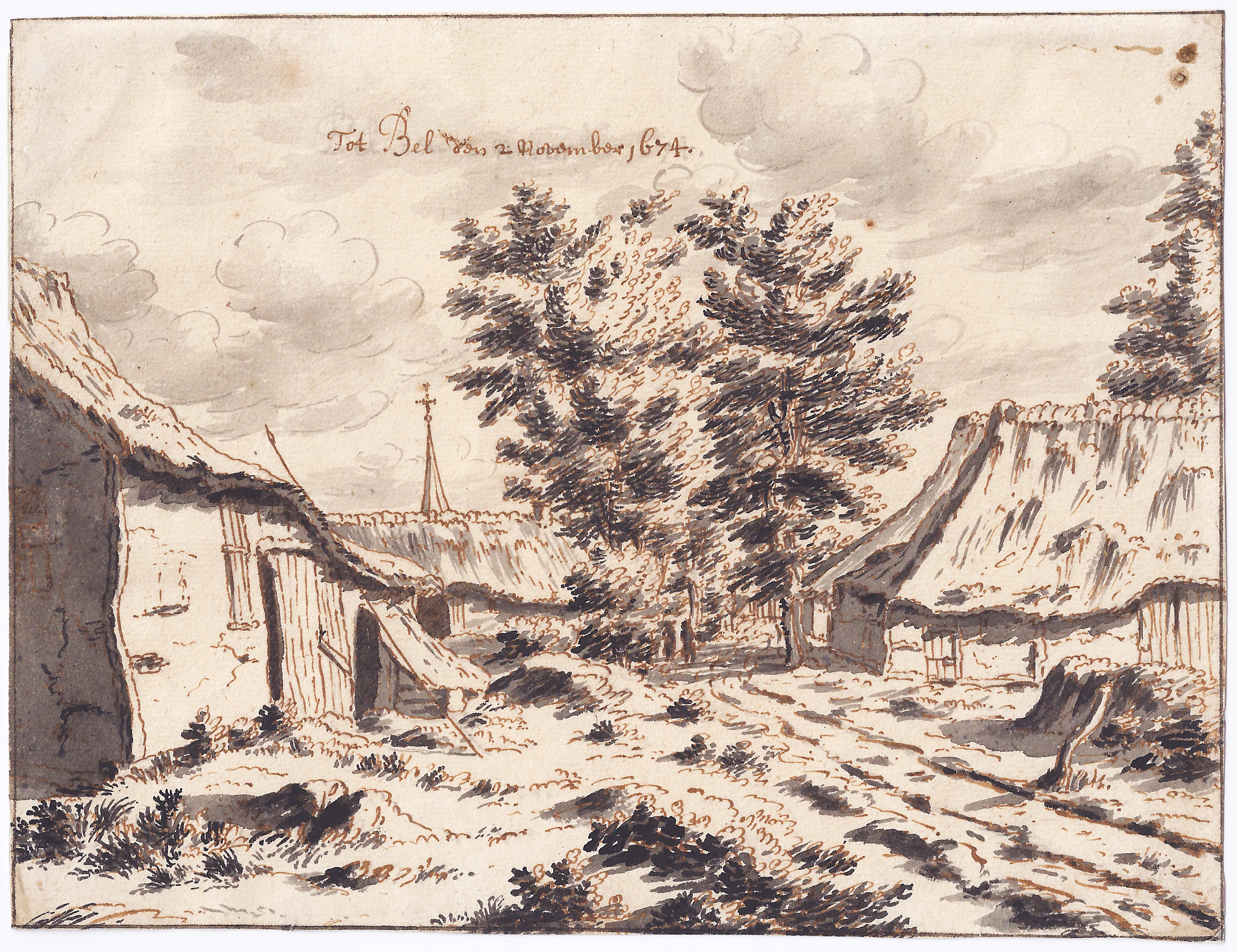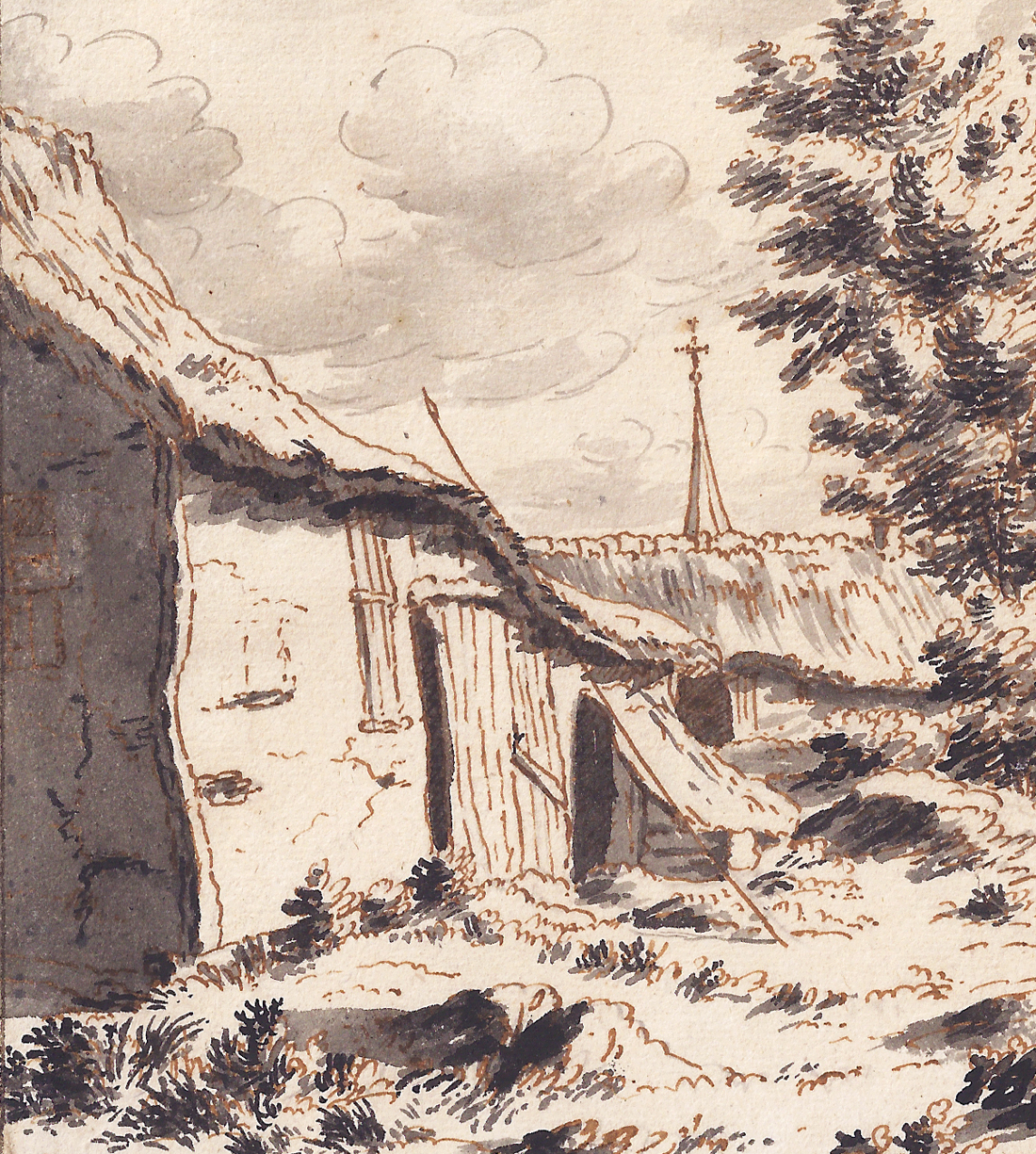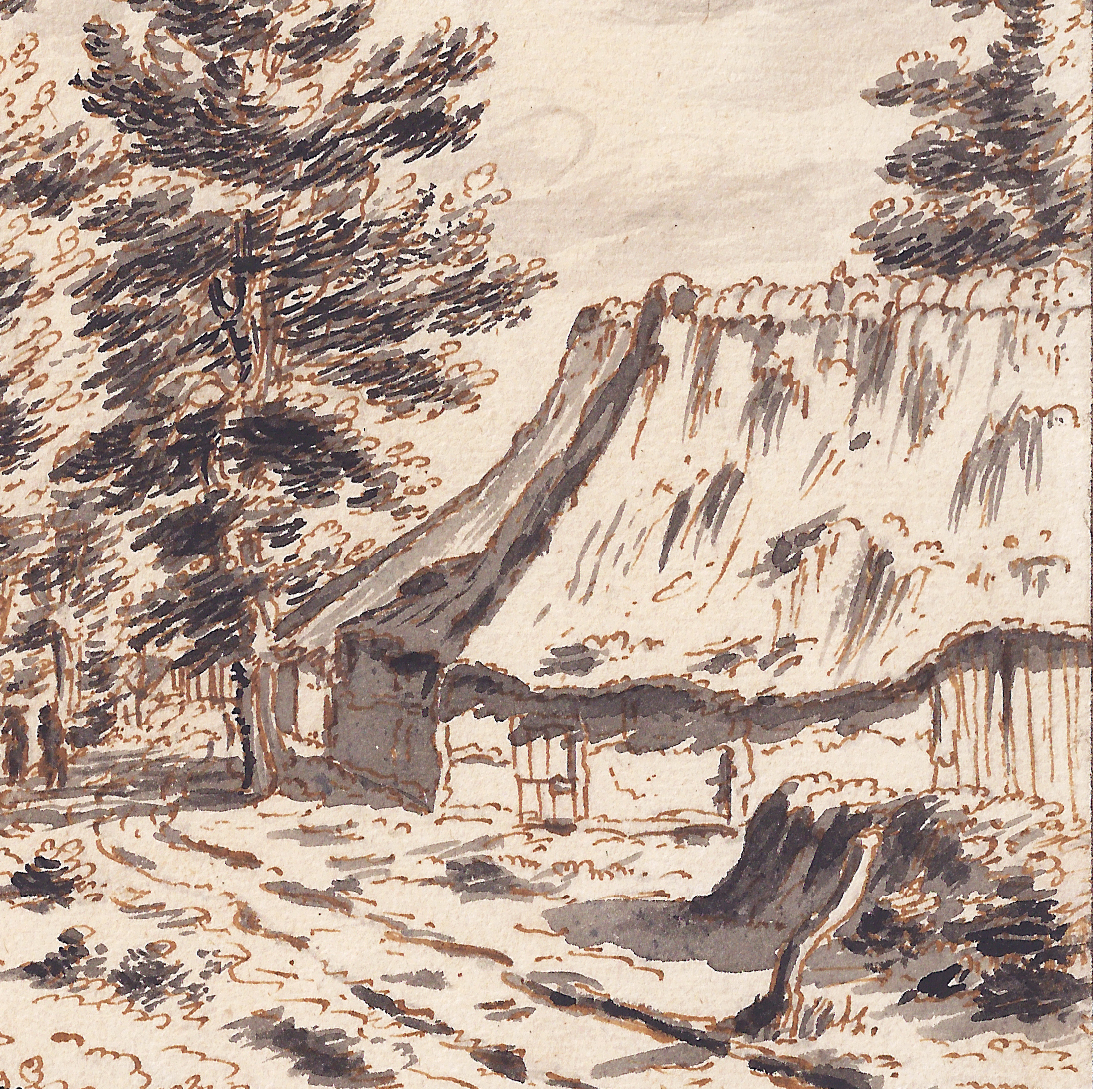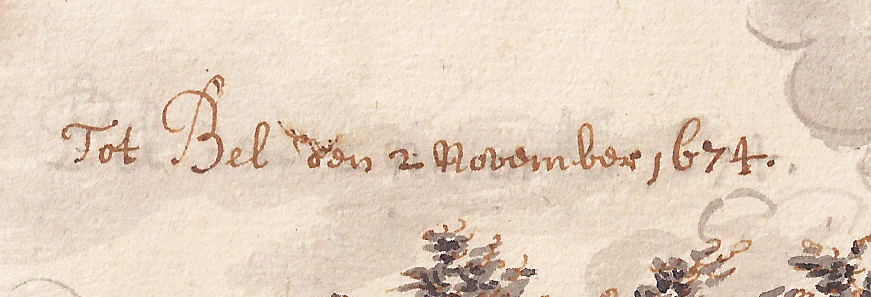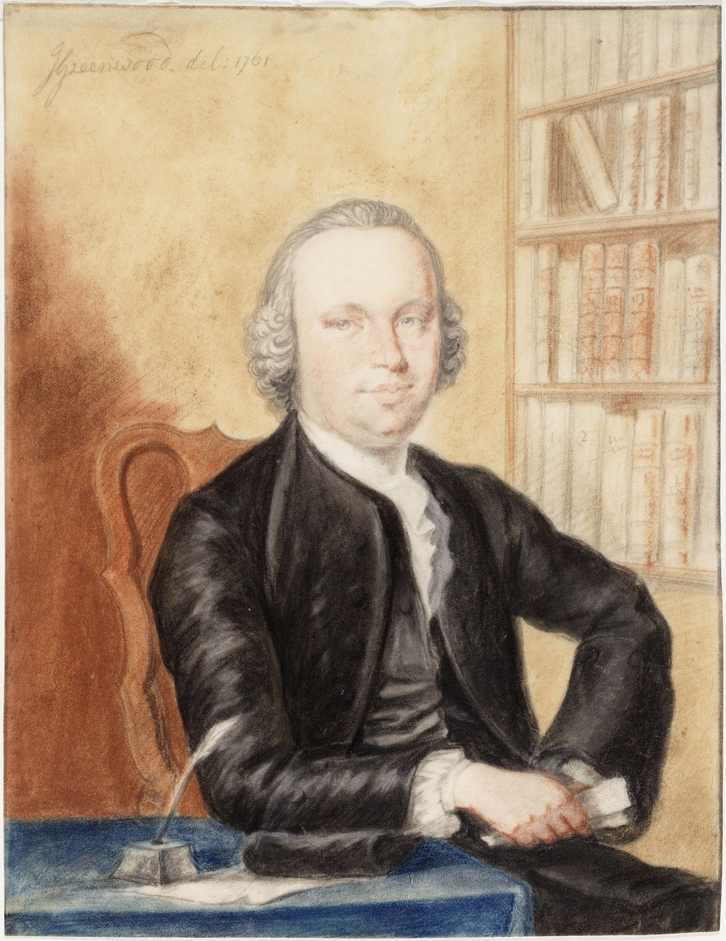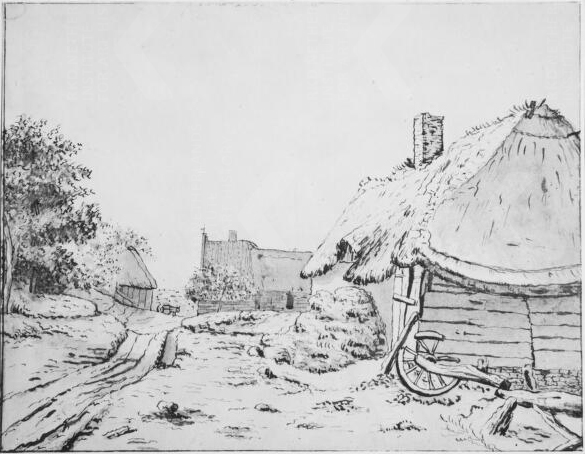VALENTIJN KLOTZ (Maastricht c. 1650 – 1721 The Hague)
Valentijn Klotz (Maastricht c. 1650 – 1721 The Hague)
View of the Village of Bel
Pen and brown ink, grey wash, 151 x 201 mm (5.9 x 7.9 inch)
Inscribed and dated ‘Tot Bel den 2 November 1674.’ (pen and brown ink); inscribed ‘Valentijn Clots’ (pencil, verso) and numbered ‘No 174’ and ‘36’ (pencil, verso)
Provenance
~ Floris Lijnslager (1721–1778); his sale, ‘Catalogus van eenen atlas der Zeven Provintien (…) voorts eene zeer schoone collectie pourtraiten en historieprenten’, Alkmaar (J. Maagh and A. Maagh), 19 October 1778, Album 2, no. 68: ‘Gezigt bij Mons en een ander te Bel 1674, beide Getekend door Clotz.’
~ Rudolf Peltzer (1825–1910), Cologne (Lugt 2231, his mark applied lower right, verso)
~ Private collection, Germany
***
Valentijn Klotz’s oeuvre is mostly composed of topographical drawings, many inscribed with the date and place they were made, such as is the case with the present sheet.1 From 1672 to 1676 Klotz accompanied the ‘Staatse leger’, the army of the Dutch Republic commanded by the Stadtholder-King William III, on its campaigns against Louis XIV of France, who was invading the Southern Netherlands. Many drawings were done during this adventurous period of places where the army was stationed; they were partly of strategic value, recording places of interest for future military expeditions. Later in life Klotz drew views of The Hague, where he had settled. His carefully delineated drawings have much in common with those of Contantijn Huygens II (1628–1697) and Josua de Grave (1643–1712), who also recorded the exploits of the Dutch army. Klotz’s drawings are very similar to those by De Grave, but are livelier and artistically more sophisticated – they can also be distinguished by Klotz’s distinctive handwriting.2
Today Klotz’s drawings are of particular value because they document the tiny villages and hamlets spread across the country, which were rarely depicted during the seventeeth century – the developing cityscape genre mainly focused on the larger cities and towns. An excellent example is the present drawing of the minuscule village of Bel, east of the town of Geel in the province of Antwerp. Klotz drew other views in modern-day Belgium, for instance of Malines, Nivelles (South of Brussels), and Ghent, all drawn in 1674.3
It is possible that the grey wash was added by Klotz at later date, to give the drawing more ‘body’ and visual presence. A view in the same technique by Klotz in the Hermitage, St Petersburg, has the autograph annotation stating that he added the ‘shadows’ (wash) about two decades after the execution of the drawing.4
The drawing formed part of the Atlas – a collection of topographical drawings – formed by the Alkmaar enthusiast Floris Lijnslager in the mid-eighteenth century. A portrait in pastel of the collector seated in his library by John Greenwood, dated 1761, is preserved in the Regionaal Archief Alkmaar (fig.).5 Among the volumes depicted in the background of the pastel may be the albums in which Lijnslager kept his topographical drawings. In Lijnslager’s Altas, the drawing was included in the section on Flanders and was paired with a view of Mons, or Bergen, most probably the view of the hamlet of Zuidergeest, near Bergen op Zoom, preserved in the Groninger Museum, Groningen (fig.).6
SOLD
1. For Klotz as a draughtsman, see M. Breitbarth-van der Stok, ‘Josua de Grave, Valentinus Klotz en Bernardus Klotz’, Bulletin van de Koninklijke Nederlandse Oudheidkundige Bond 68 (1969), pp. 93-115. For examples of the handwriting of Valentijn Klotz, Bernardus Klotz and Josua de Grave, see J.H. van Mosselveld and W.A. van Ham, Tekeningen van Bergen op Zoom, Bergen op Zoom 1973, p. 16.
2. E. Haverkamp-Begemann a.o., Fifteenth- to Eighteenth-Century European Drawings: Central Europe, The Netherlands, France, England, The Robert Lehman Collection VII, New York 1999, p. 286.
3. Malines: pen and brown ink, wash, 111 x 351 mm; dated 10 May 1674; Wallraf-Richartz-Museum, Cologne, inv. no. 1940/10; see Hella Robels, Niederländische Zeichnungen vom 15. Bis 19. Jahrhundert im Wallraf-Richartz-Museum in Köln, Cologne 1983, no. 165, repr. Another view of Malines dated 1 May 1674 was with Galerie Arnoldi-Livie, Munich, 1990. Nivelles: pen and brown ink, 80 x 139 mm; dated 8 August 1674; Rijksmuseum, Amsterdam, inv. no RP-T-1895-A-3111. Ghent: pen and brown ink, 91 x 154 mm; dated 26 September 1674; Rijksmuseum, Amsterdam, inv. no RP-T-1898-A-3766.
4. Haverkamp-Begemann, op. cit., p. 286.
5. Inv. no. PR 1001756. Lijnslager’s Altas consisted of hundreds of drawings, with large groups by Antonina Houbraken, Abraham Rademaker, Jacobus Stellingwerff, Cornelis Pronk, Abraham de Haen II and other 18th-century artists. By Klotz there were further views of Veghel, dated 1676 (no. 30), Zuidergeest, near Bergen (no. 47), and Herpen, dated 1675 (no. 228).
6. Pen and brown ink, grey wash, 154 x 200 mm; inv. no. B 443; see J. Bolten, Nederlandse en Vlaamse tekeningen uit de zeventiende en achttiende eeuw, keuze van tekeningen in de verzameling van het Groninger Museum voor Stad en Lande, Groningen 1965, no. 37, repr. The Groningen drawing is not dated; another version of this drawing is in the Provinciaal Genootschap, Den Bosch, and is dated 1671 – it is less likely that Lijnslager owned the Den Bosch drawing, as the date would have been recorded in the 1778 sale catalogue.
